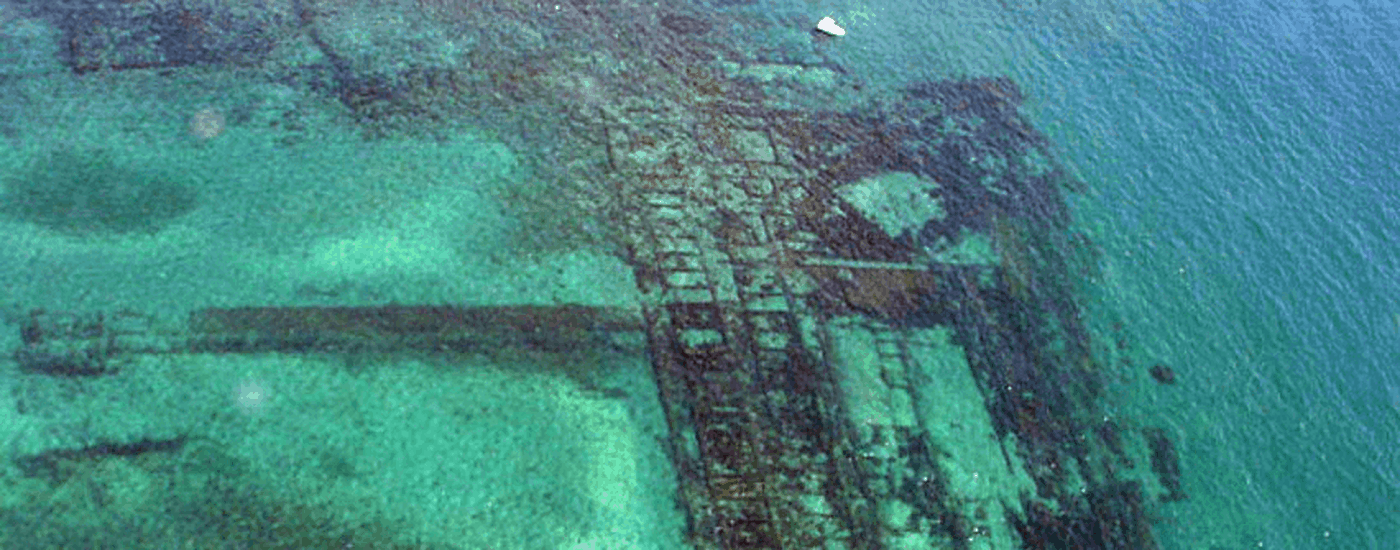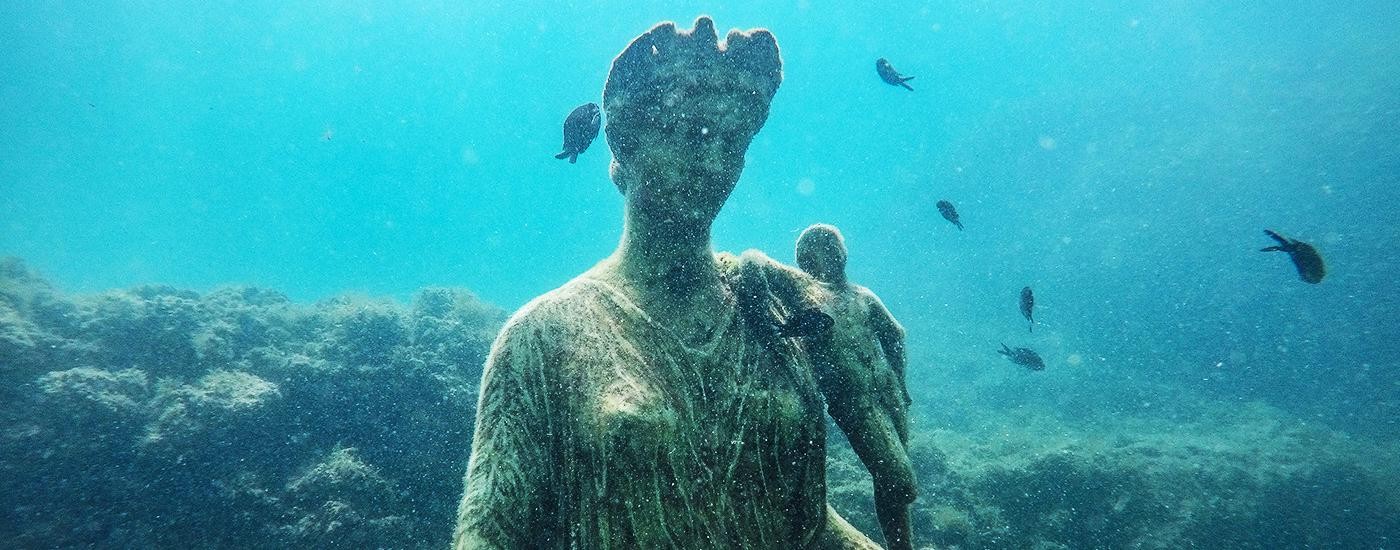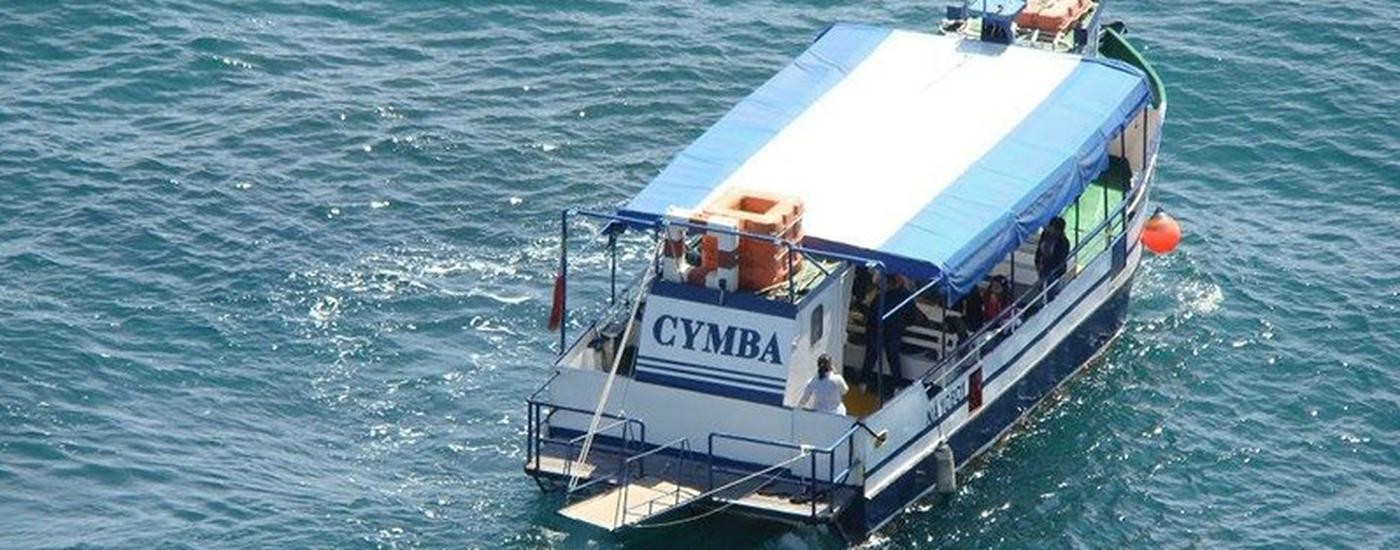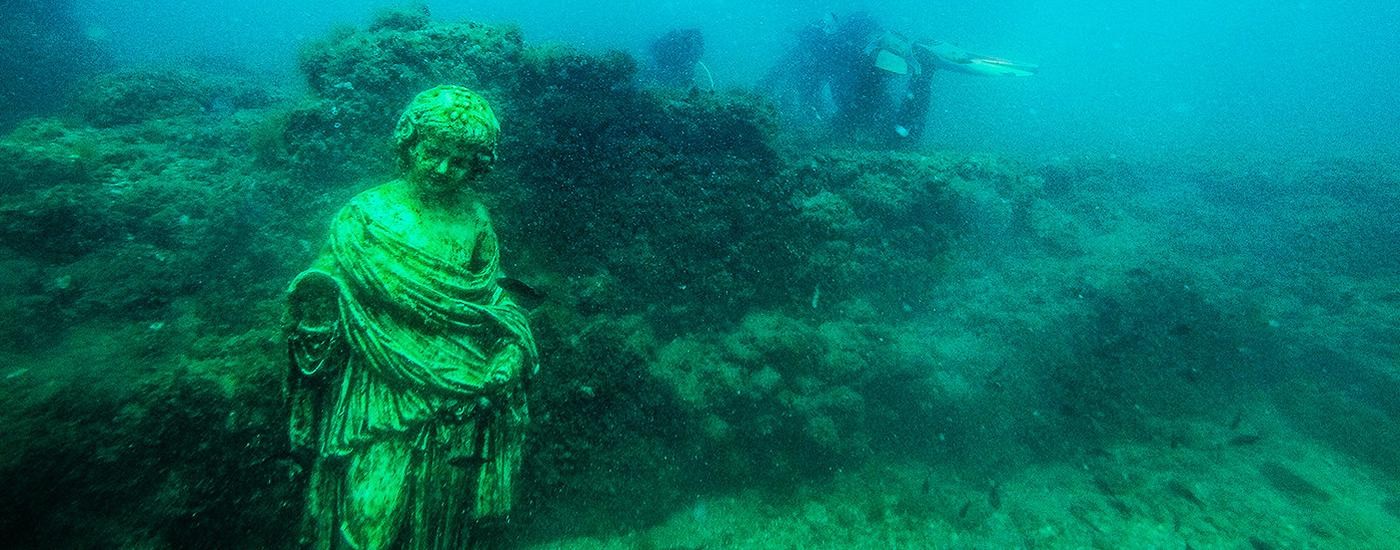Daily SCUOLA
Caratteristiche
Visita guidata:
al Castello Aragonese di Baia con annesso Museo Archeologico dei Campi Flegrei
al Parco Archeologico di Baia
all'antica città sommersa di Baia tramite il battello Cymba
L’itinerario inizia dalla visita al Castello Aragonese di Baia. La costruzione della fortezza iniziò nel 1495, insieme ad altre fortificazioni nel Regno di Napoli, in occasione dell’imminente invasione da parte del Re di Francia Carlo VIII. Il Castello di Baia rientrava in un sistema difensivo che consentiva di controllare l’avvicinamento delle flotte nemiche e lo sbarco di truppe che avrebbero potuto assalire Napoli con una manovra di aggiramento. Nel 1531 il viceré spagnolo Pedro de Toledo ristrutturò ed ampliò radicalmente la fortezza e dopo l’eruzione del Monte Nuovo nel 1538 iniziarono i lavori di restauro che proseguirono fino al 1550 con un complesso di opere che davano al Castello l’aspetto attuale.
Nel 1544 il Castello riuscì a respingere l’attacco del corsaro Barbarossa proveniente da una razzia compiuta ad Ischia con 150 vascelli e 4 navi. Esemplare fu la strategia degli uomini della fortezza, i quali prima fecero avvicinare le imbarcazioni nemiche sotto il Castello e poi le affondarono coi cannoni che avevano nascosto nel fortino esistente sulla spiaggia. Durante l’ultimo conflitto mondiale, la fortezza fu occupata prima dai Tedeschi e poi dagli Alleati. Nel 1984 viene consegnato alla Soprintendenza Archeologica di Napoli per la realizzazione del Museo Archeologico dei Campi Flegrei. Il museo raccoglie numerose e preziose testimonianze proveniente da tutta l’area flegrea esposti in molteplici sale. Particolarmente belle e suggestive le ricostruzioni con reperti originali recuperati dalla Città Romana Sommersa del Ninfeo Imperiale di punta Epitaffio a Baia e del Sacello degli Augustali di Miseno (attualmente chiuse al pubblico). Fra gli altri oggetti esposti figurano i frammenti dei calchi in gesso di Baia che documentano i capolavori della statuaria greca altrimenti perduta.
L'itinerario prosegue con la visita al Parco Archeologico detto Terme Romane di Baia, probabilmente il più grande e maestoso complesso termale dell'Italia antica, una città termale con sudatori, piscine e belvedere, fu tra le opere che valsero alla cittadina imperiale di Baia, l'appellativo di "Pusilla Roma" (la piccola Roma). Seneca, ossessionato e abbagliato dalla sfolgorante e rutilante vita di Baia, la descrive come il boom della villeggiatura e della dolce vita, carosello di amori, avventure, follie e congiure, luogo di piacere e di lutti. Un contrasto che vive nei numerosi poeti, che ne decantarono bellezza e suggestione. Orazio proclamò “il golfo di Baia il più splendido del mondo” (Ep. I, 1, 83), per Properzio fu il nemico delle caste fanciulle e per Marziale la dorata spiaggia di Venere. Le donne di Baia fanno parte della leggenda: Cinzia, Lesbia, Messalina, Levina, Poppea fino a Fiammetta di Boccaccio nel Medio-Evo.
Qui morì il grande imperatore Adriano nell’estate del 138 d.C. A Baia i politici ed i vip della società civile, vi avevano costruito lussuose ville. Lo stesso fecero gli imperatori Caligola, Claudio, Domiziano, Alessandro Severo… in una selva di marmi e bronzi, statute e colonne, busti d’oro e affreschi tra il verde dei mirti e delle piante più rare. Il tutto fu inglobato nel Palatium (palazzo) imperiale. Suggestivo è il cosiddetto "Tempio di Mercurio" con la sua cupola ardita, il cui diametro è la metà rispetto a quella del Pantheon di Roma ed il laghetto interno gremito di vita. Senz’altro da fotografare, nell’ambiente precedente, il curioso fico sottosopra.
Pausa pranzo
Il tour prosegue con l’imbarco sul Cymba, un battello dalla carena di vetro ci consentirà di ammirare seduti sotto il livello del mare*, come in un grande museo sommerso, i resti della "Città Imperiale di Baia". Un suggestivo viaggio alla scoperta delle dimore degli imperatori e dei patrizi romani, sprofondate nel mare circa 2000 anni fa, a causa del bradisismo. Dal greco “bradiùs” (lento) e “seismòs” (movimento), il bradisismo è un lento movimento in senso verticale, in contrapposizione con quello veloce di un terremoto, che varia da pochi centimetri ad alcuni metri. Si manifesta con sollevamenti ed abbassamenti connessi all’evoluzione di questa zona vulcanica attiva che produce un aumento della temperatura e della pressione in profondità, provocando un rigonfiamento del sottosuolo col conseguente innalzamento. Viceversa, quando l’energia sottostante diminuisce, la superficie sprofonda lentamente.
Dal II secolo dopo Cristo, il livello del suolo inizia ad affondare lentamente nel mare per cui le strade, le ville e le costruzioni che si trovavano lungo il litorale Flegreo vengono sommerse lentamente dal mare ed oggi possiamo scorgere i resti attraverso le vetrate del Cymba. La città imperiale insieme al Portus Julius e alla via Herculanea, fanno parte di un'immensa area archeologica sommersa (sei volte Pompei) che parte da Miseno e termina alla Gaiola di Napoli.
Conclude il nostro tour la visita al Tempio di Venere che rappresenta la parte più bassa delle Terme di Baia e, per quanto infossato di circa sei metri, conserva ancora la sua imponenza e bellezza.
⚠- Al fine di ottimizzare l’organizzazione, ci riserviamo di gestire la sequenza delle visite a nostra discrezione.
* In caso di scarsa visibilità dei fondali sarà proposto un itinerario alternativo.
SCARICA LA LOCANDINA IN PDF
PREZZO € 16,00 ad alunno (1 insegnante gratuito ogni 10 alunni) - adulti € 30,00
Imbarco: Porto di Baia - Via Molo di Baia, 20 - 80070 Bacoli Napoli > Vedi mappa
Il tour scolastico sulla città sommersa si effettua tutti i giorni tranne sabato e domenica con partenza ogni ora.
Tutti necessitano sempre di prenotazione all'indirizzo baiasommersa@gmail.com o telefonicamente al +39 3494974183. Le prenotazioni si chiudono 48 ore prima dell'evento.
Daily
Itinerary:
1. Aragonese Castle of Baia and Archeological Museum of Campi Flegrei
2. Archeological Park of Baia
3. Baia Sommersa on the boat and temple of Venus
9.30 a.m. Departure from port of Baia
The itinerary starts with a visit to the Aragonese Castle of Baia. The construction of the fortress began in 1495, with other forts in the Kingdom of Naples, on the occasion of the imminent invasion by the King of France Charles VIII. The Castle of Baia was part of a defensive system that allowed to control the approach of enemy fleets and the landing of troops who could have attacked Naples with a flanking operation. In 1531 the Spanish Viceroy Pedro de Toledo restructured and radically enlarged the fortress and after the eruption of Monte Nuovo in 1538 the restoration work started and continued until 1550 with a complex of works that gave to the castle its current appearance.
In 1544 the Castle succeeded in repelling the attack of the Corsair Barbarossa after his raid carried out in Ischia with 150 vessels and 4 ships. The strategy of the men of the fortress was exemplary, they first brought enemy boats closer to the castle and then they sank them with the cannons that they had hidden in the fort on the beach. During the last world war, the fortress was occupied first by the Germans and then by the Allies. In 1984 it was handed over to the Archeological Superintendence of Naples for the construction of the Archeological Museum of the Campi Flegrei. The museum collects numerous and precious testimonies coming from the whole Phlegrean area exposed in multiple rooms. Particularly beautiful and evocative reconstructions with original artifacts recovered from the submerged Roman city of the Imperial Nymphaeum of Epitaph peak in Baia and the Sacello degli Augustali of Miseno (currently closed to the public). Among the other exhibits there are the fragments of plaster casts of Baia that record the masterpieces of Greek statuary otherwise lost.
The itinerary continues with a visit to the Archeological Park called Roman Thermae of Baia, probably the largest and most majestic spa complex in ancient Italy, a spa town with sudatorium, swimming pools and viewpoint, and it was among the works that earned the imperial town of Baia, the name of “Pusilla Rome” (the small Rome). Seneca, obsessed and dazzled by the blazing and glowing life of Baia, describes it as the holiday boom and the sweet life, carousel of loves, adventures, follies and conspiracies, a place of pleasure and mourning. A contrast that lives in many poets, who praised the beauty and suggestion. Horace proclaimed it as “the gulf of Baia the most beautiful of the world” (Ep. I, 1, 83), for Propertius it was as the enemy of the castes girls and for Marziale it was as the golden beach of Venus. Women of Baia are part of the legend: Cinzia, Lesbia, Messalina, Levina, Poppea up to Fiammetta of Boccaccio in the Middle-Ages.
The great emperor Hadrian died here in the Summer of 138 A.D. Politicians and vips from civil society built their luxurious villas in Baia. The emperors like Caligola, Claudio, Domiziano, Alessandro Severo did the same … in a forest of marble and bronzes, statues and columns, gold busts and frescoes among the green of the myrtles and the rarest plants. All of these were incorporated into the imperial Palatium (palace). Suggestive is the so-called “Temple of Mercury” with its bold dome, whose diameter is half compared to the Pantheon’s one in Rome and the inner lake full of life. Undoubtedly to photograph, in the previous room, the curious fig upside down.
Lunch break
The tour continues with the boarding on the Cymba, a boat with a glass hull that will allow us to admire sitting under the sea level the remains of the “Imperial City of Baia”, as in a large submerged museum. An evocative journey to discover the residences of Roman emperors and patricians, sunk into the sea about 2000 years ago, because of the bradyseism. From the Greek “bradiùs” (slow) and “seismòs” (moviment), bradyseism is a slow movement in the vertical direction, in contrast to the fast one of the earthquake, which varies from a few centimetres to few metres.
It is manifested by lifting and lowering connected to the evolution of this active volcanic area that produces an increase in temperature and pressure in depth, causing a swelling of the subsoil with consequent elevation. Instead, when the underlaying energy decreases, the surface sinks slowly.
From the 2nd century after Christ, the level of ground begins to sink slowly into the sea so the streets, villas and buildings that were along the Phlegrean Coast are slowly submerged by the sea and today we can see the remains through the windows of the Cymba. The imperial city together with Portus Julius and Herculanea street, are part of a large submerged archeological area (six times Pompeii) which starts from Miseno and ends at the Gaiola of Naples.
Our tour finishes with a visit to the Temple of Venus, which is the lower part of the Thermal Baths of Baia and, although buried about six meters, it still preserves its majestic and beauty.
02:30 p.m. End of our services
⚠- To optimize the organization, we reserve the right to manage the sequence of visits at our discretion.
* In case of bad visibility of the seabed an alternative itinerary will be proposed.
PRICE € 16,00 per student (1 teacher free every 10 students) - adult € 30,00










